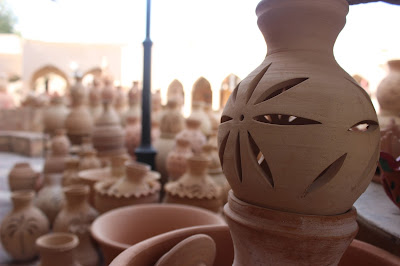Bait Al Zubair Museum is located in Muscat, capital city of the Sultanate of Oman. Oman is an enchanting country that was one of the major civilisations of the ancient world, and has a diverse and magical landscape shrouded in legend and antiquity. Northern Oman is commonly thought to be part of the copper-rich civilisation of Magan, which was mentioned in the Mesopotamian cuneiform texts , while southern Oman’s history is closely connected with frankincense, an aromatic resin that was highly prized throughout the ancient world
TRADITIONAL CRAFT INDUSTRIES
Bait Al Zubair Museum is dedicated to showcasing important ethnographic artefacts reflecting the highly specialised inherited skills that define Oman’s society, both past and present. Traditional craft industries, once a vital part of the nation’s economy, are now amongst the most important aspects of Oman’s cultural heritage. Age-old skills are customarily passed down from father to son, mother to daughter, but as a result of modernisation Omani artisans are now producing fewer traditional products. Yet it is the traditional goods, produced by individuals or in small family workshops, that are most representative of Oman, its people, their identity and the country’s past
BAIT AL ZUBAIR - THE HOUSE THAT BECAME A MUSEUM
Bait Al Zubair (House of Al Zubair) is a private museum that opened its carved wooden doors to the public in 1998. It is totally funded by its founders, the Zubair family. The museum displays the family’s collection of Omani artefacts, which is considered to be the finest that is privately owned. With the variety of exhibits, modern display methods and information provided, the museum serves as a real window on Oman’s rich heritage and culture. Since it opened the museum has expanded into a cultural complex that continues to evolve and is internationally recognised.
Bait Al Zubair is proud to exhibit two magnificent old canons presented by His Majesty Sultan Qaboos bin Said to the museum on the occasion of its opening. The museum is one of country’s architectural icons and in 1999 was the proud recipient of His Majesty Sultan Qaboos’ Award for Architectural Excellence, the first time it was awarded in Oman
























































